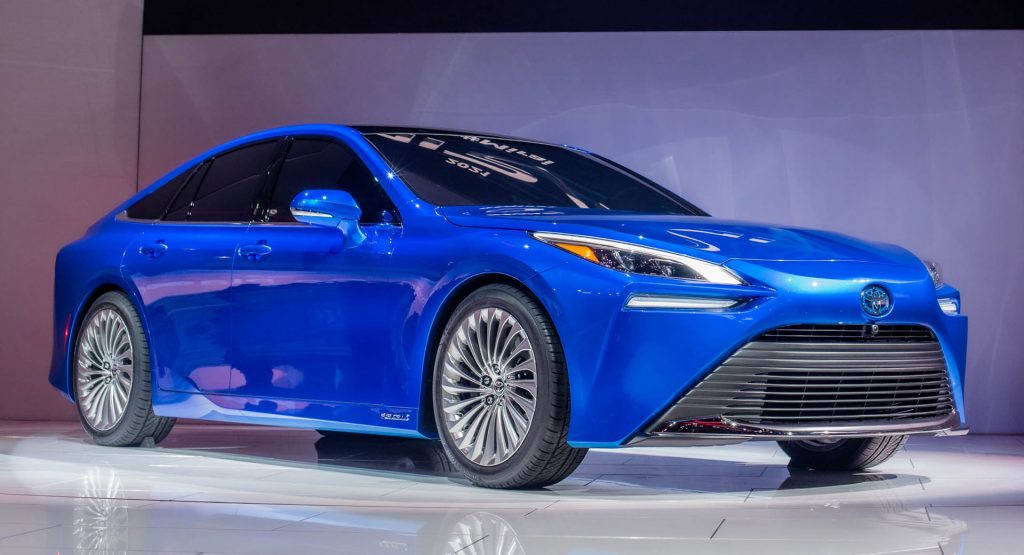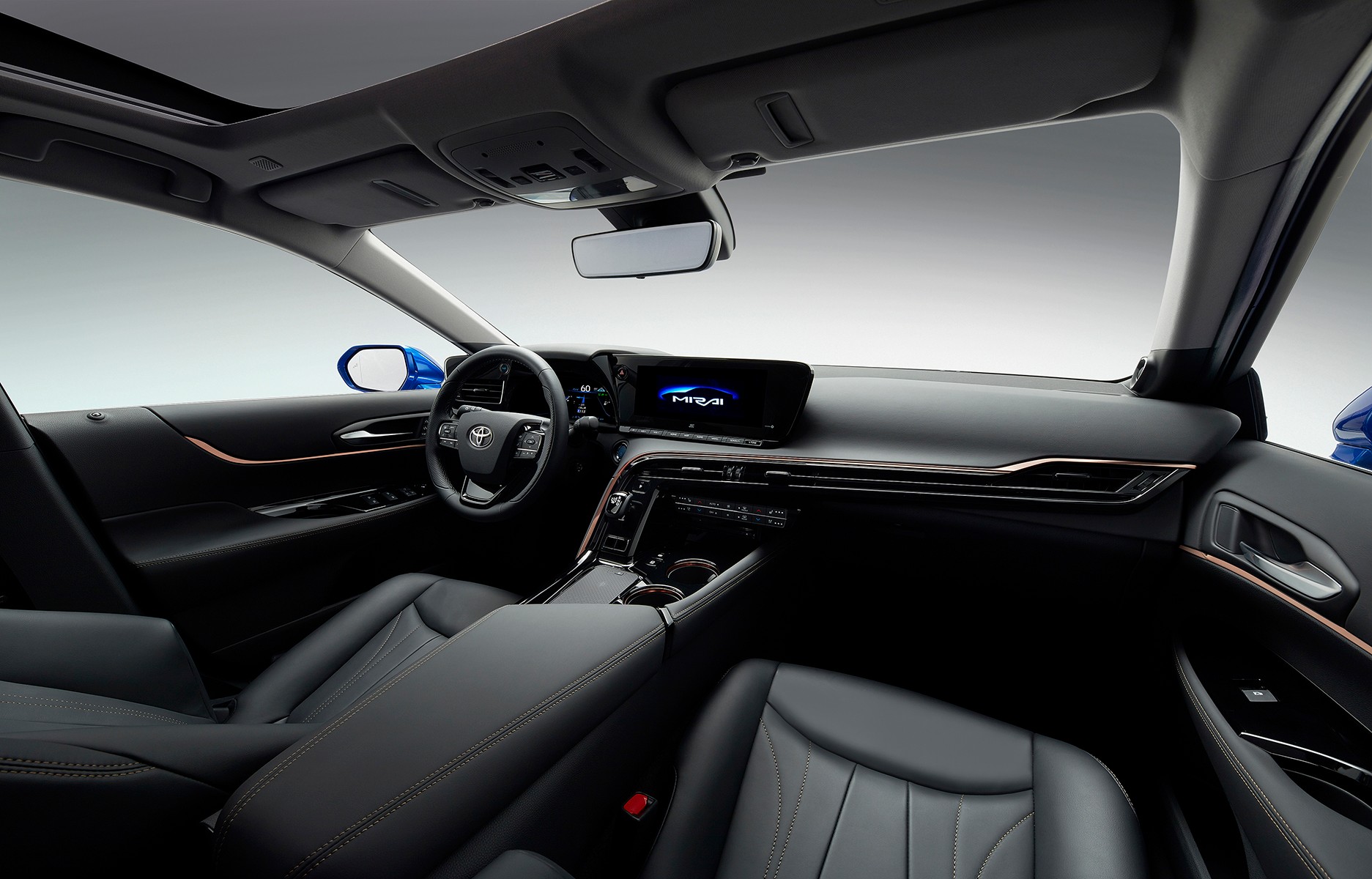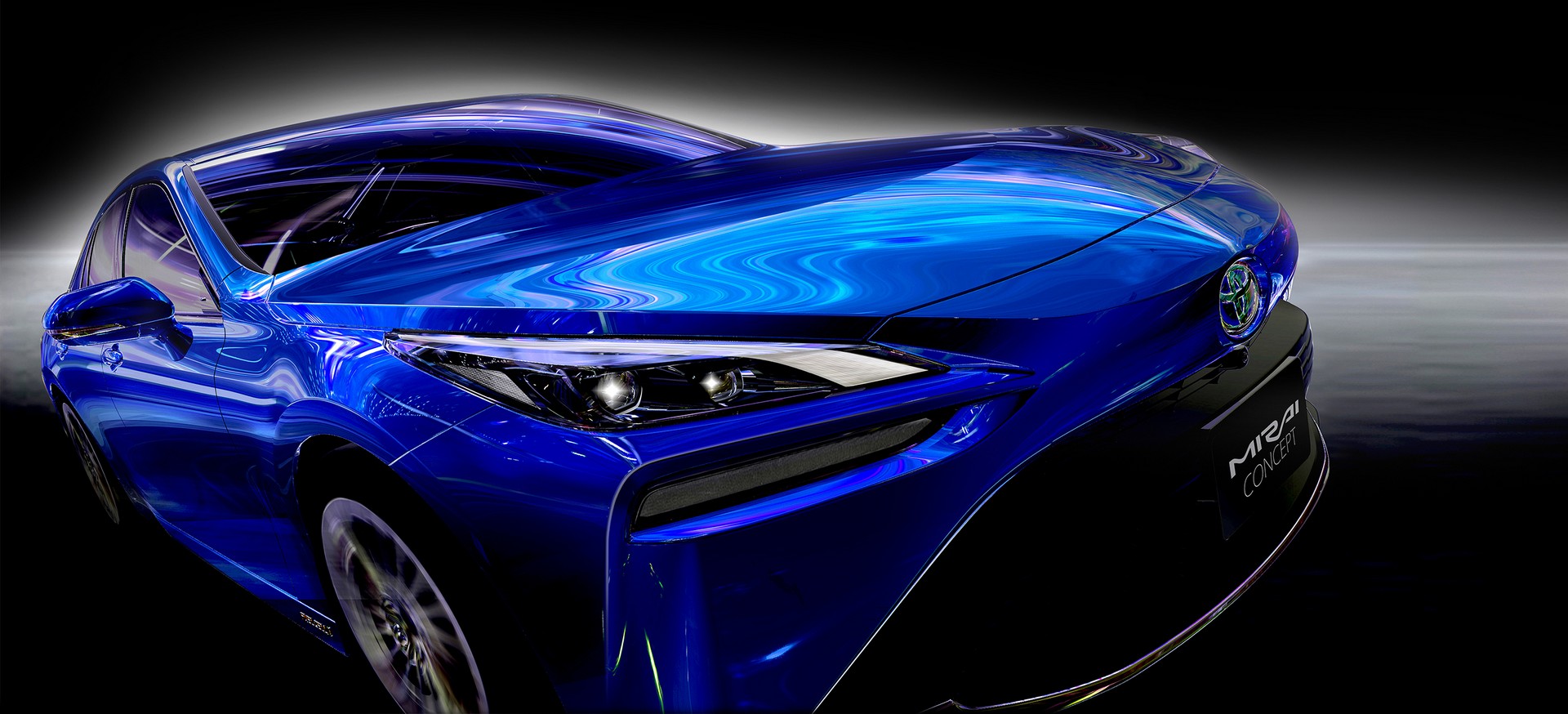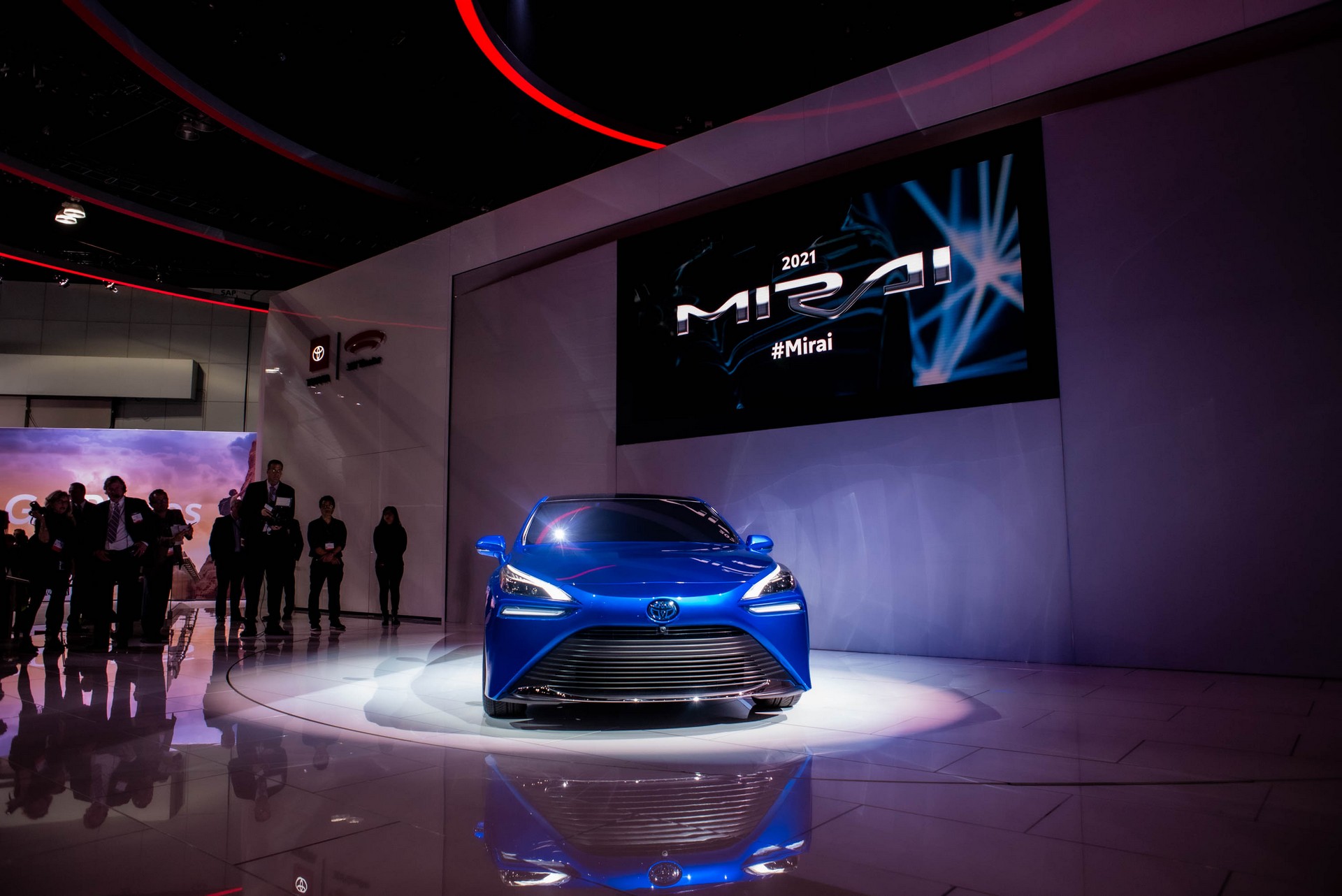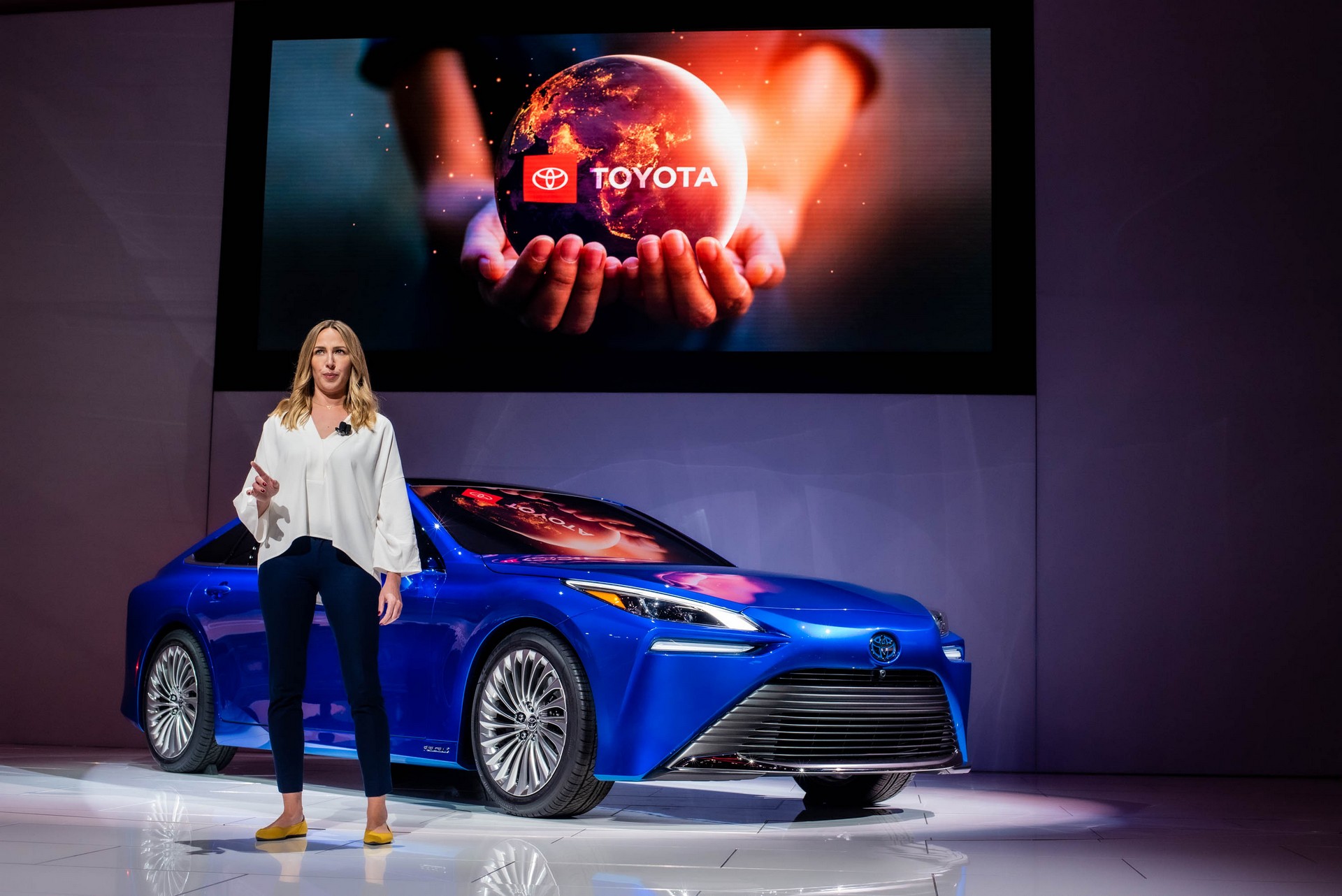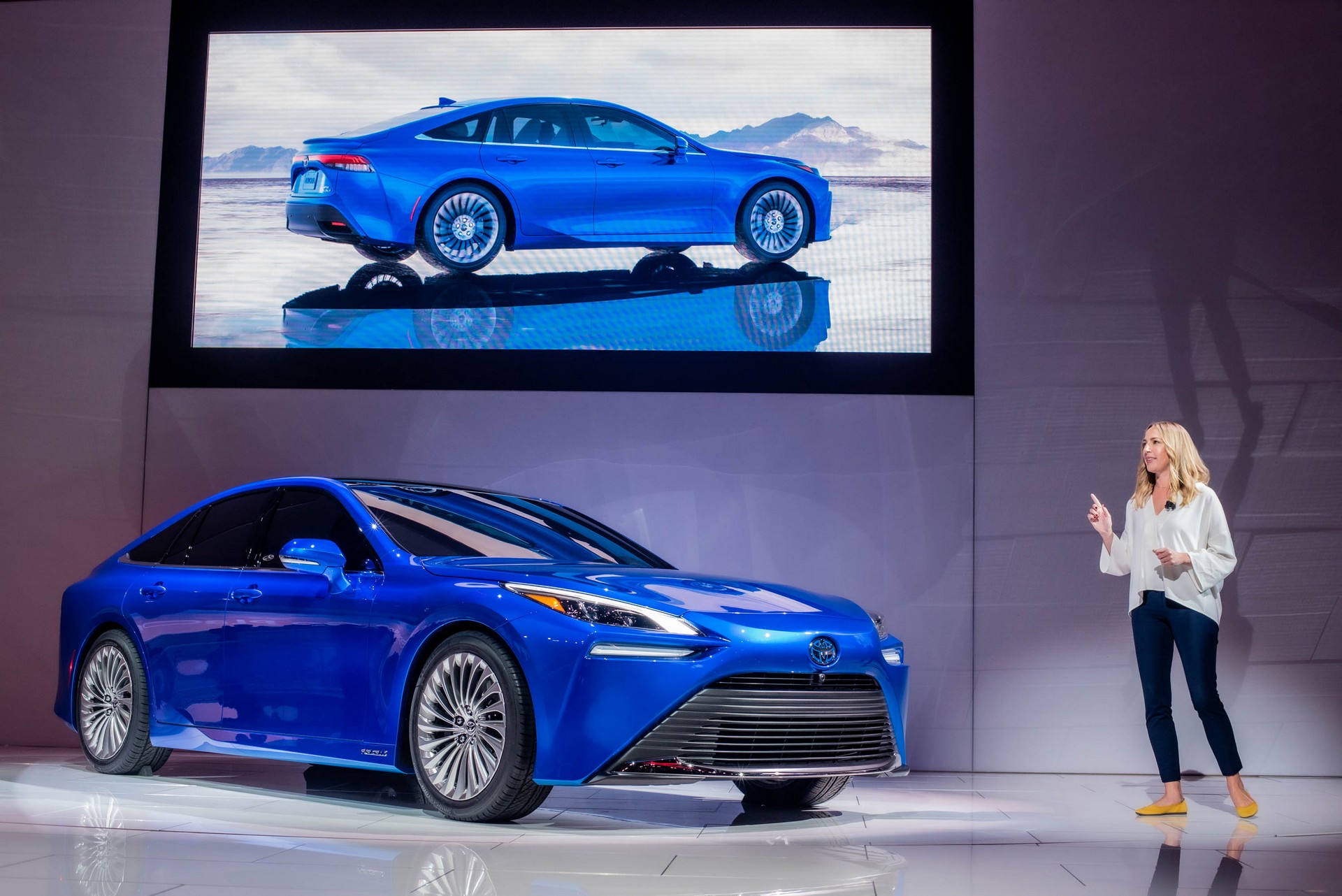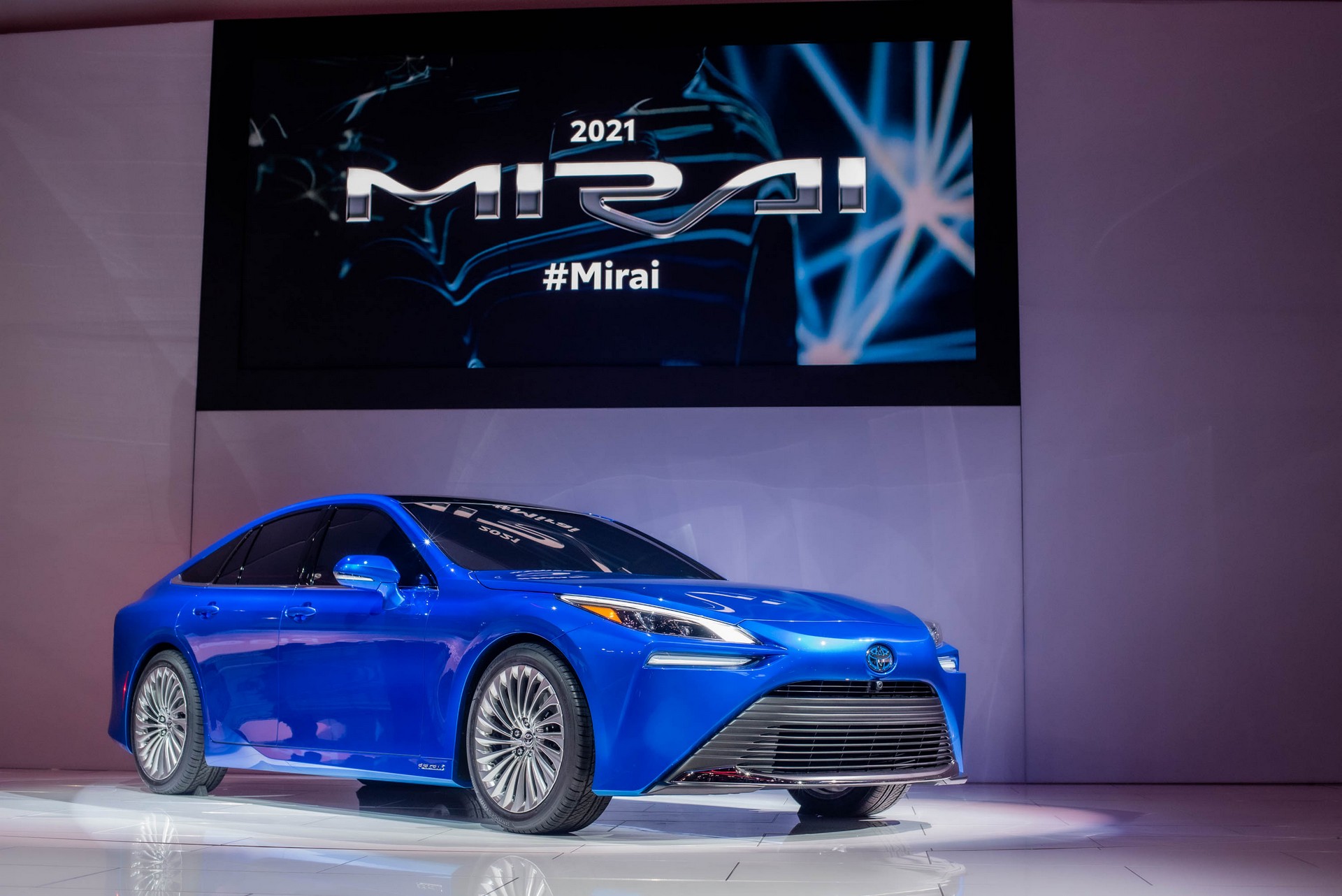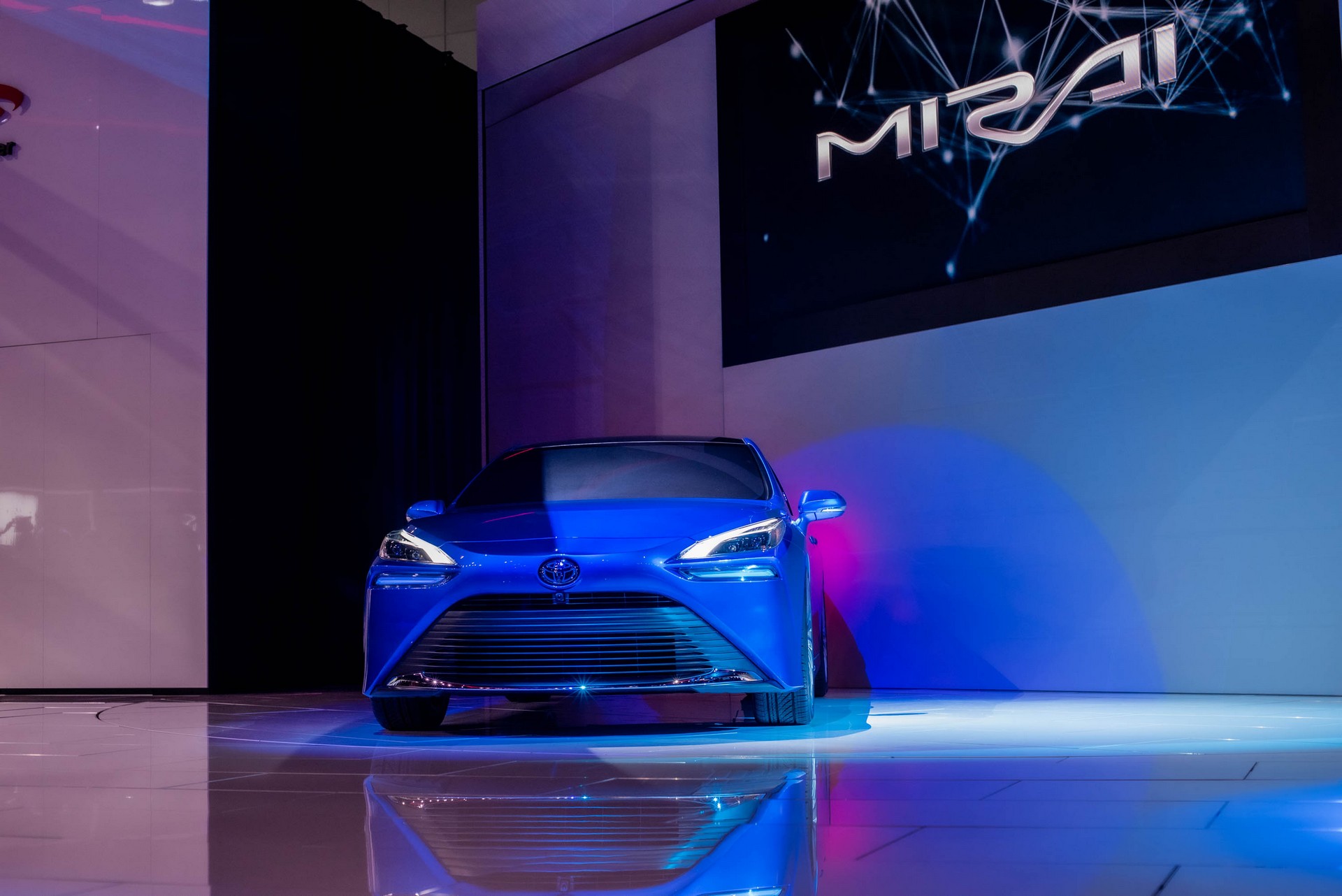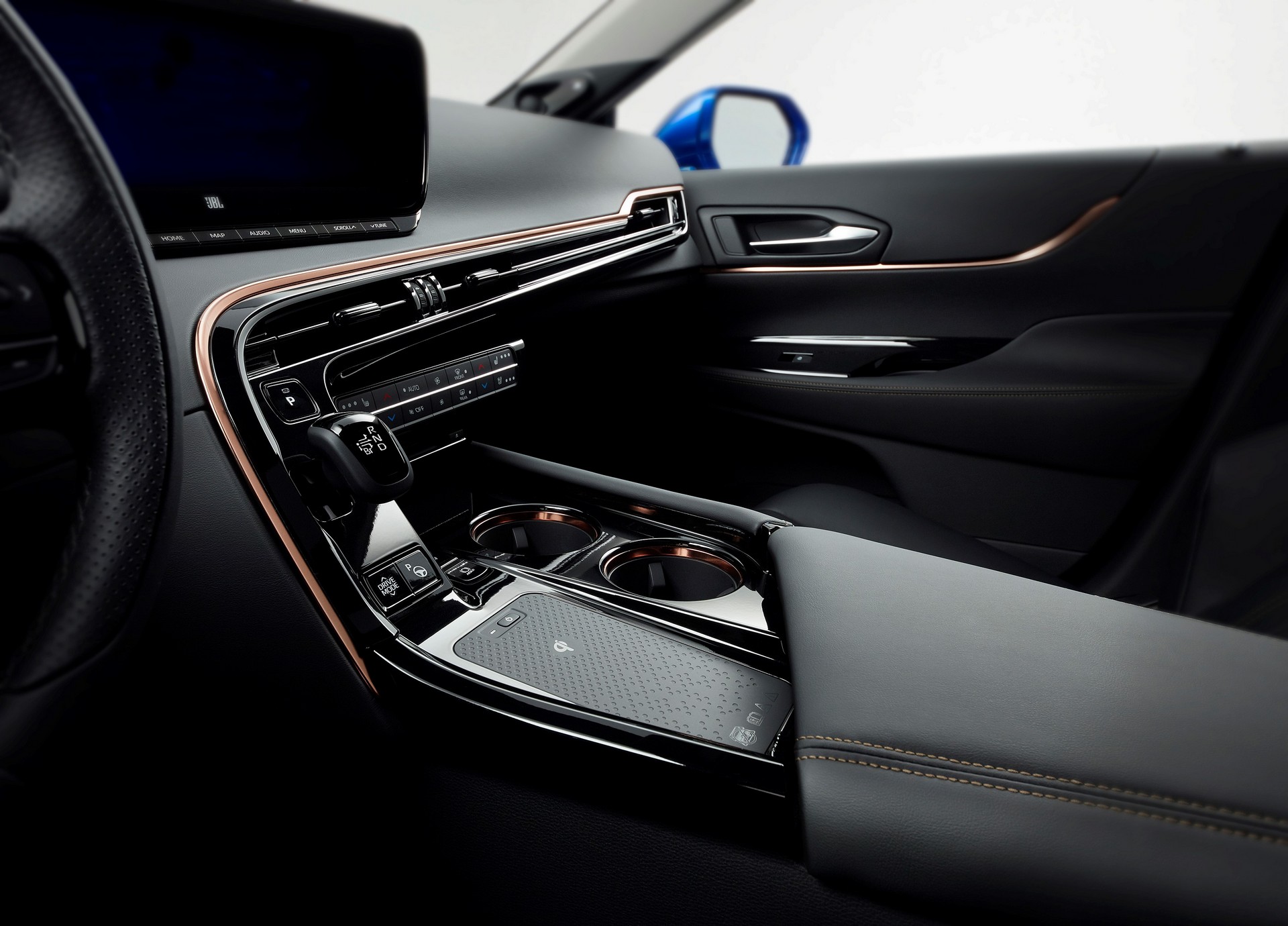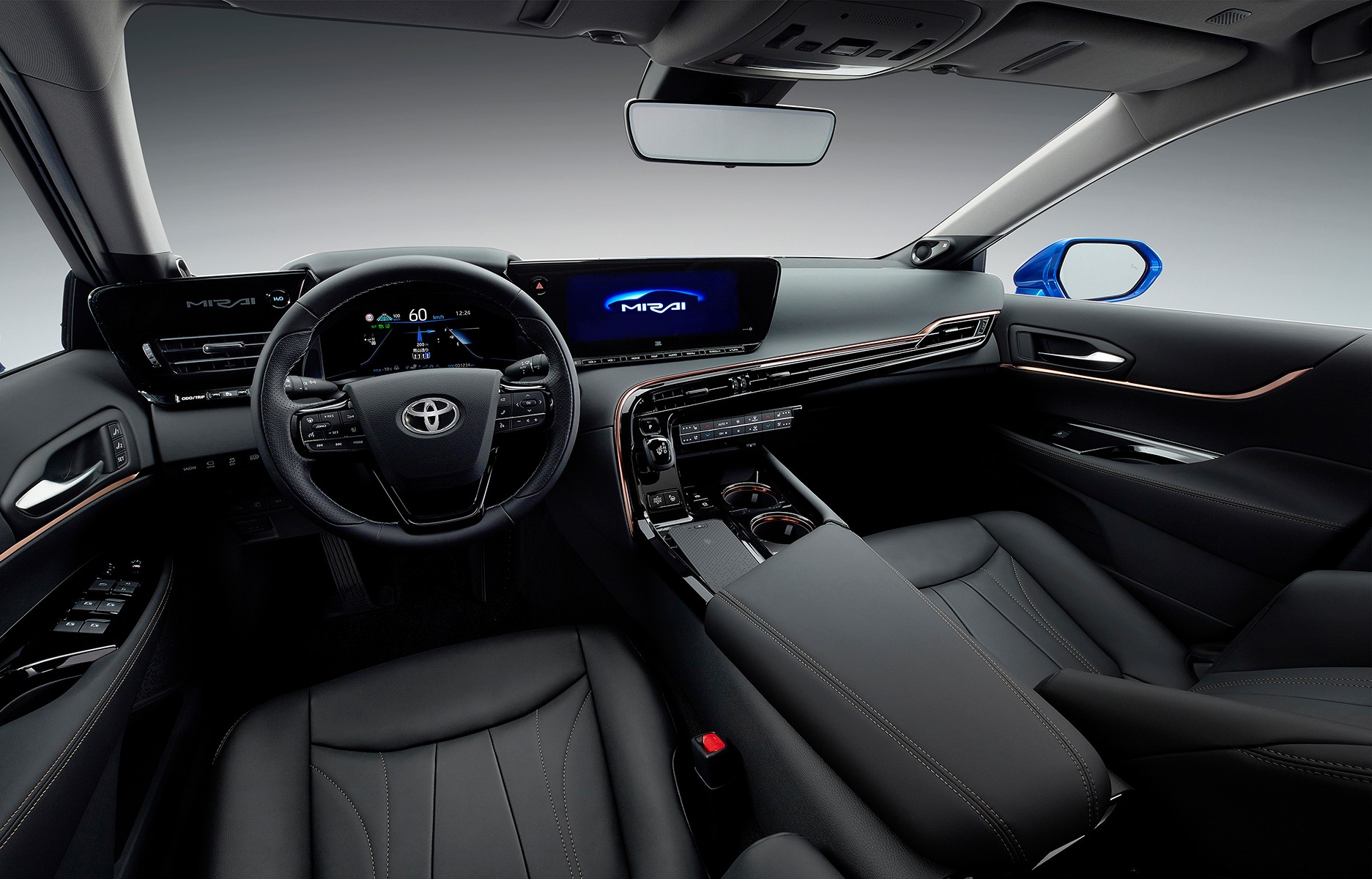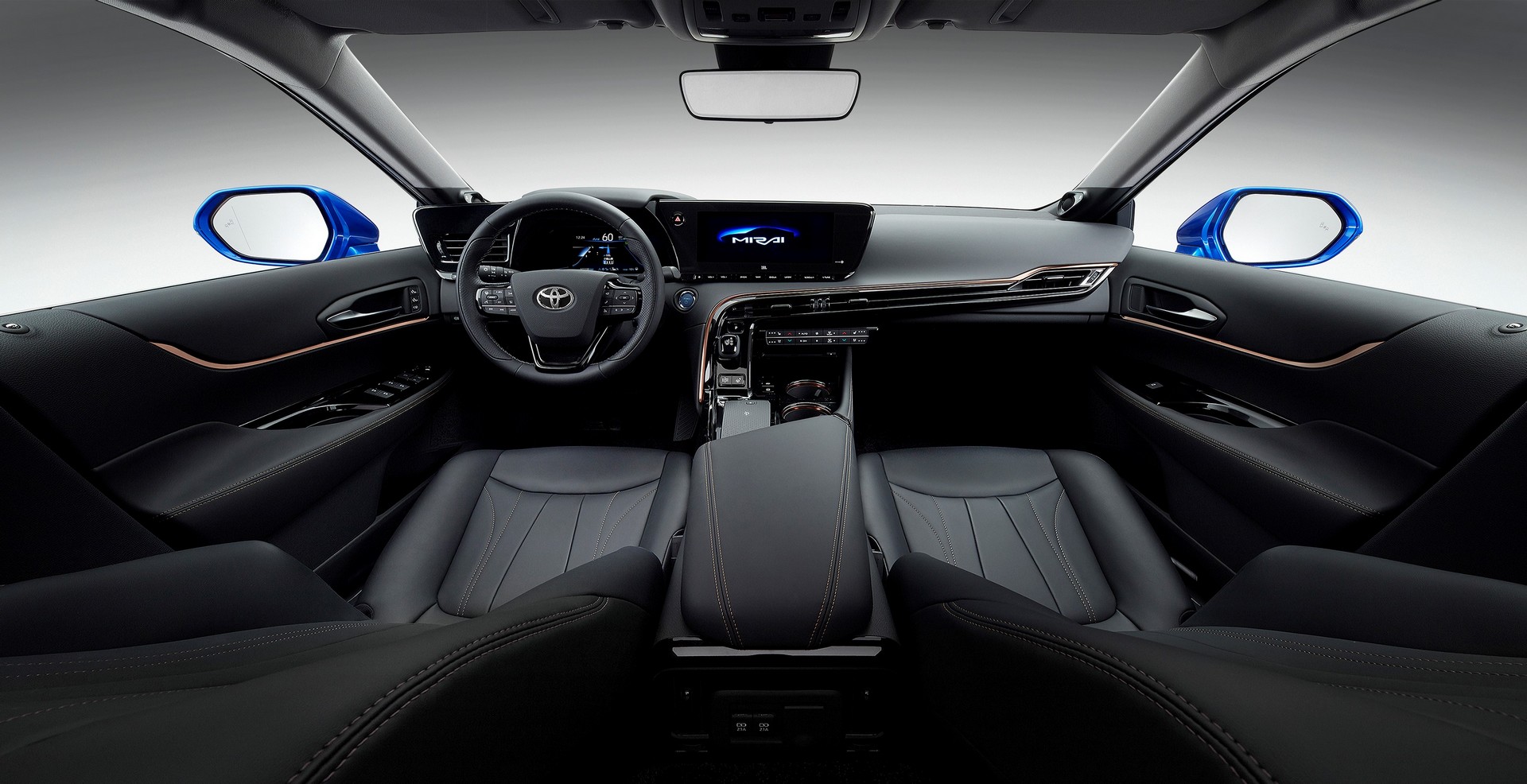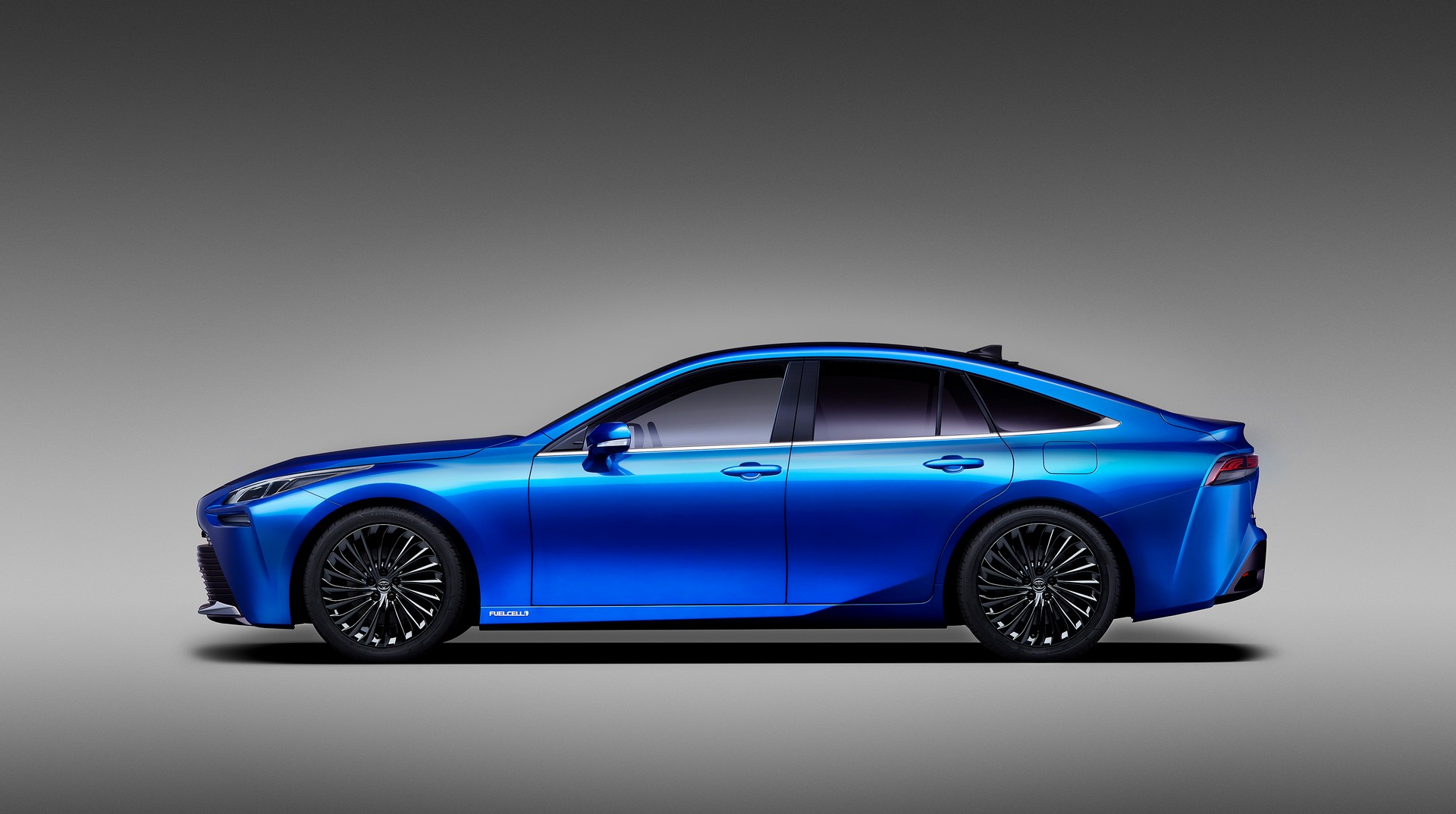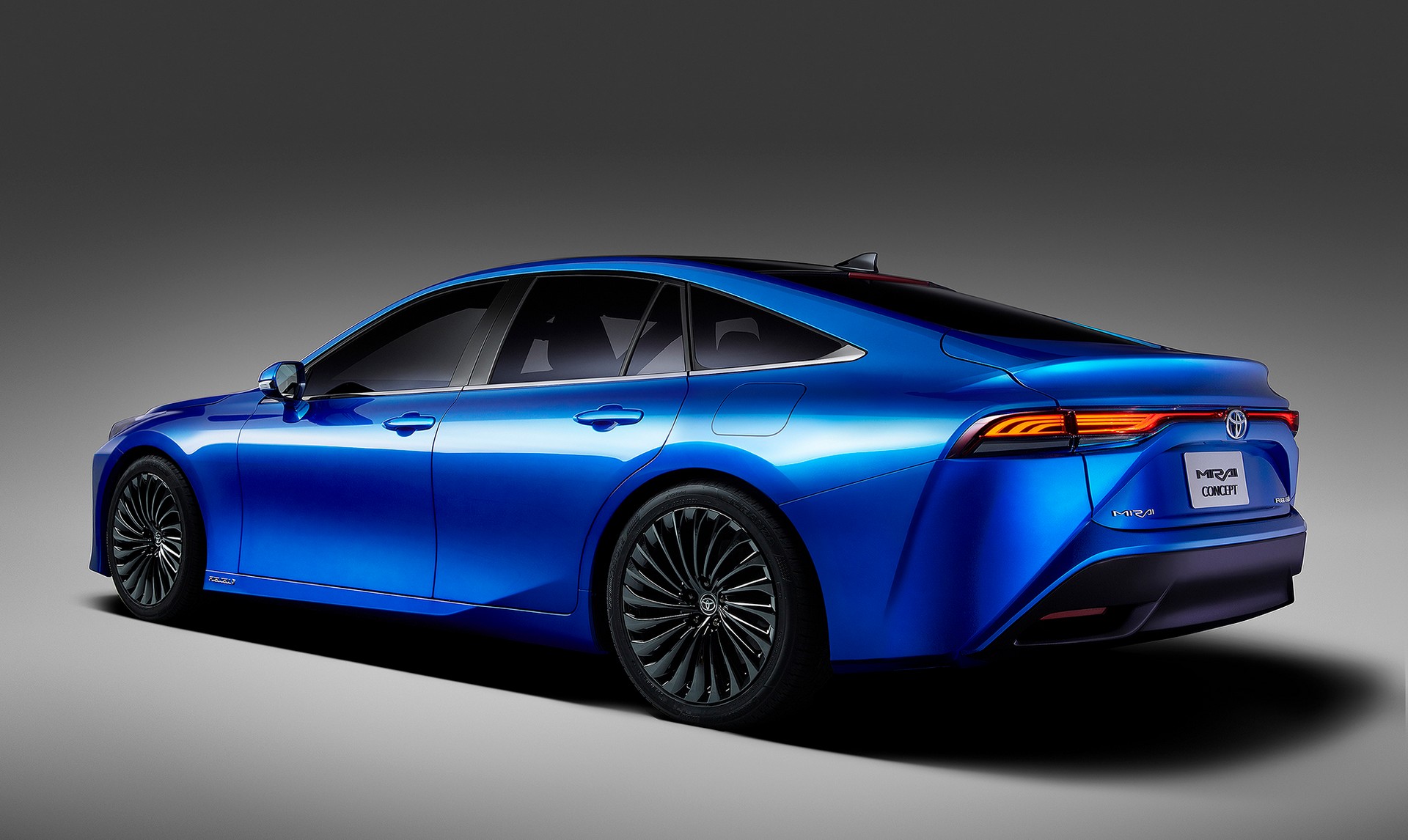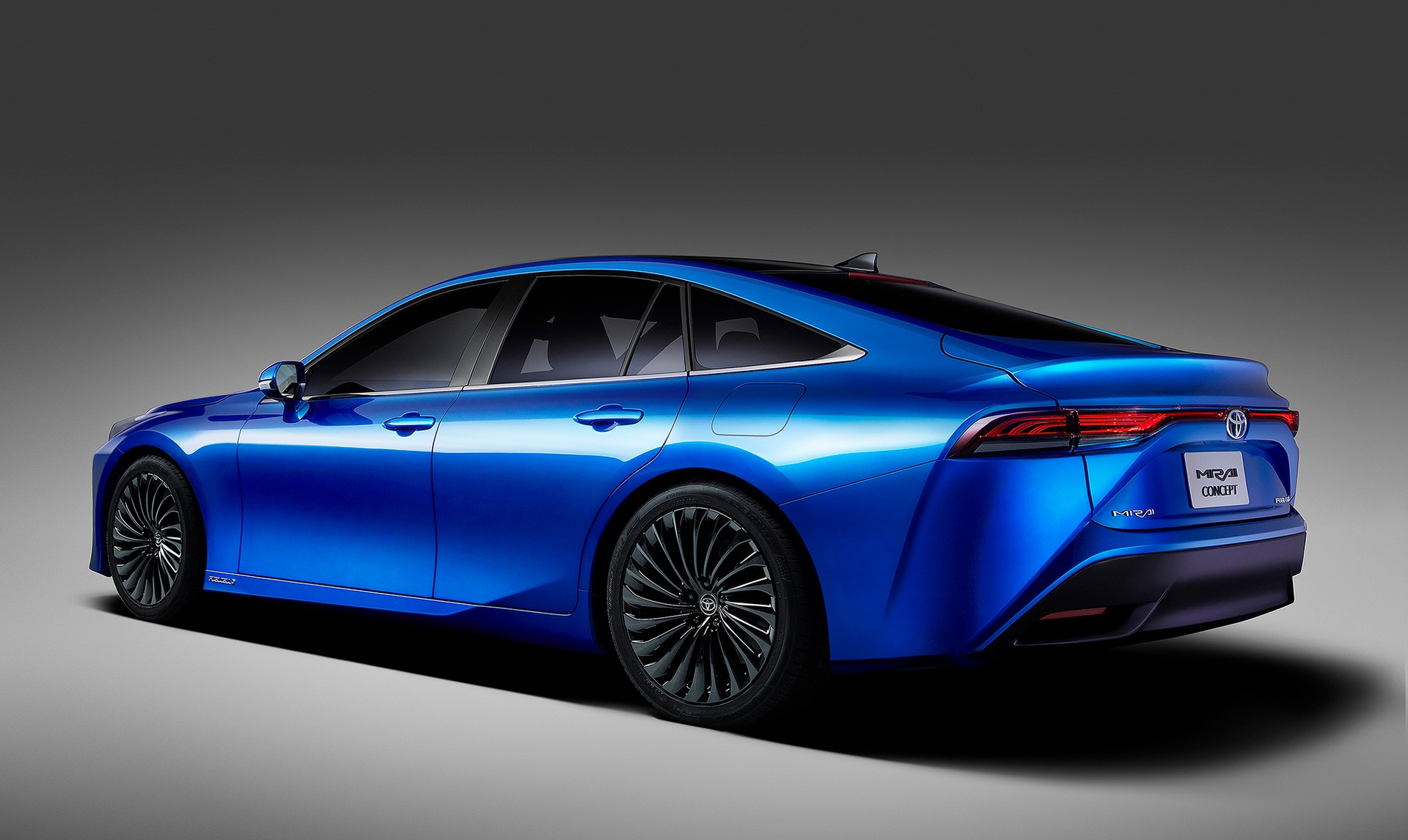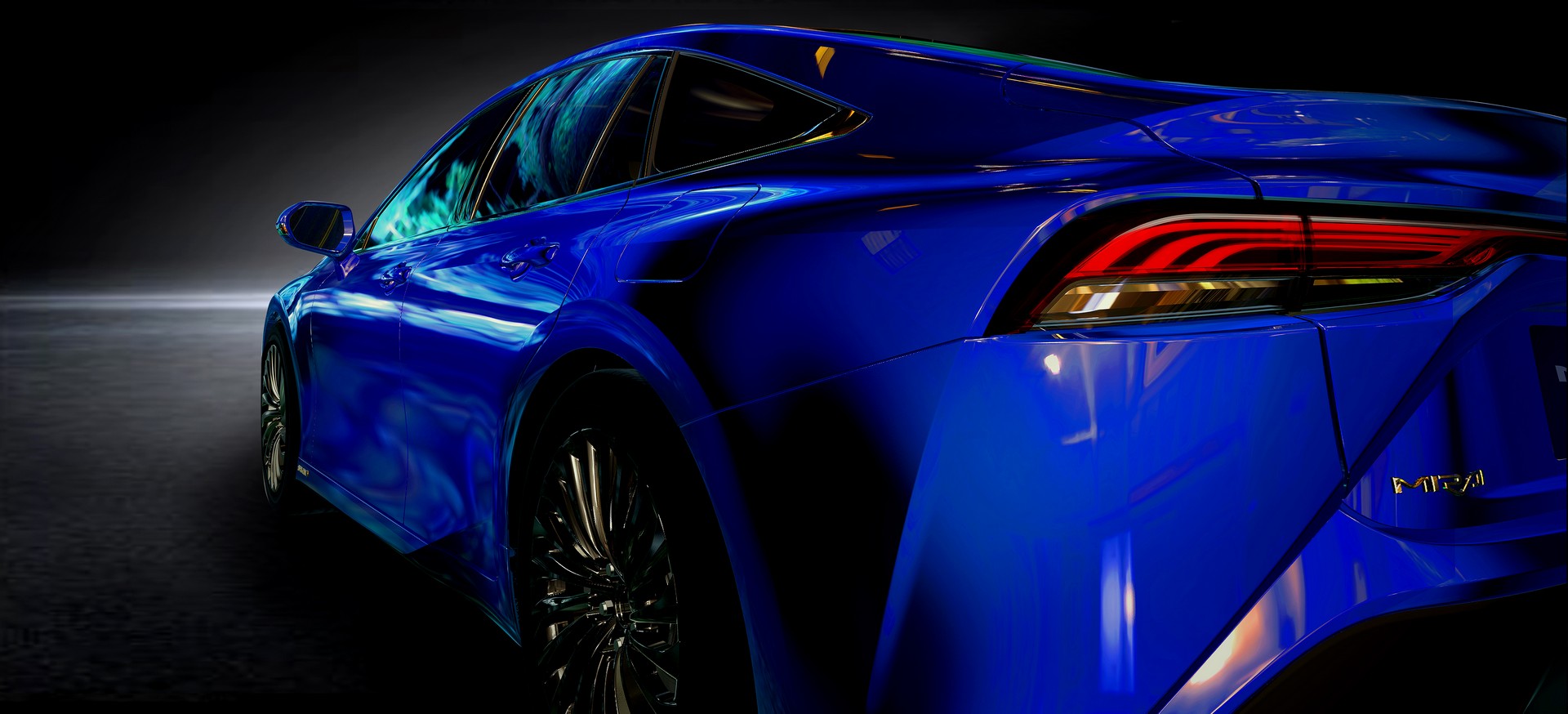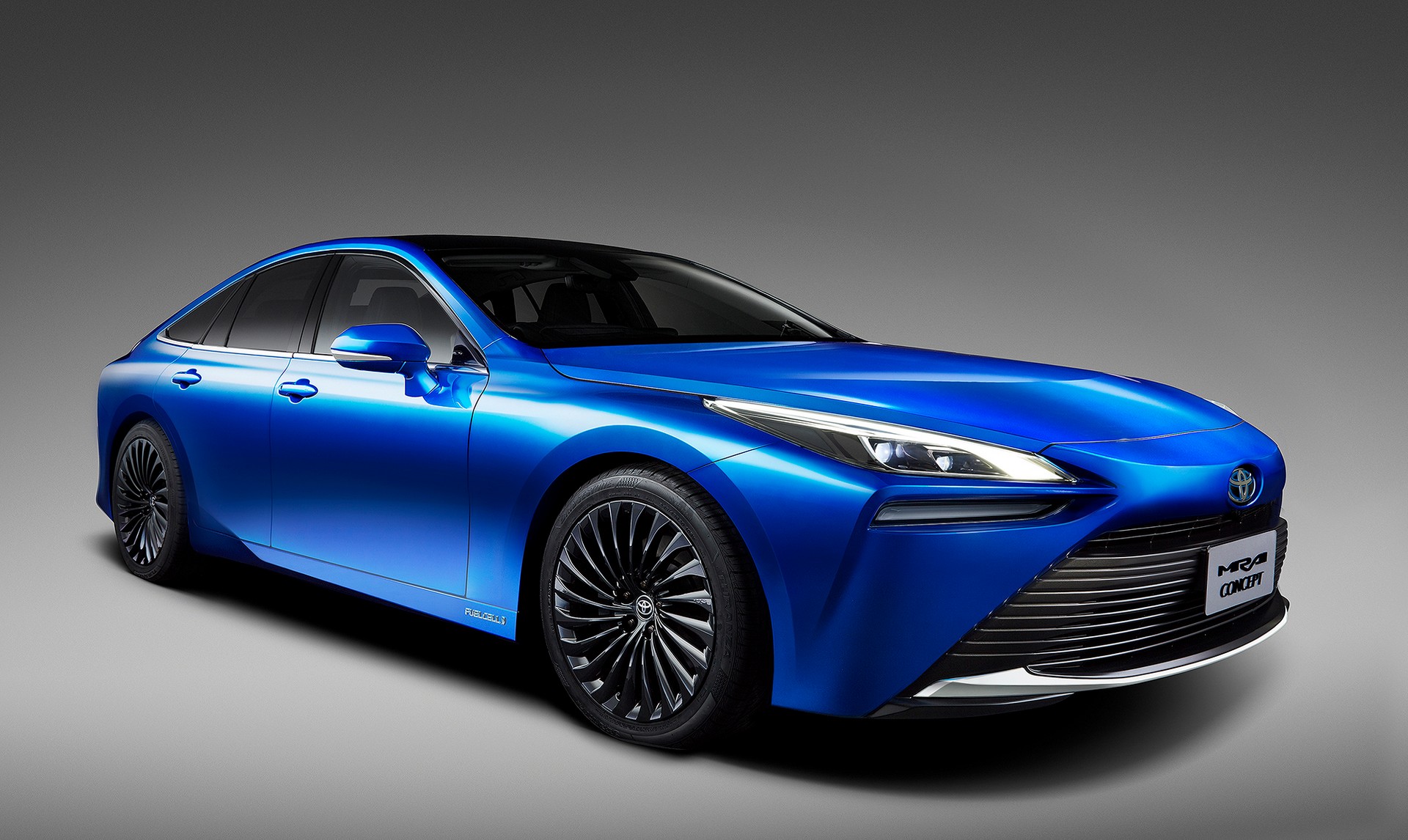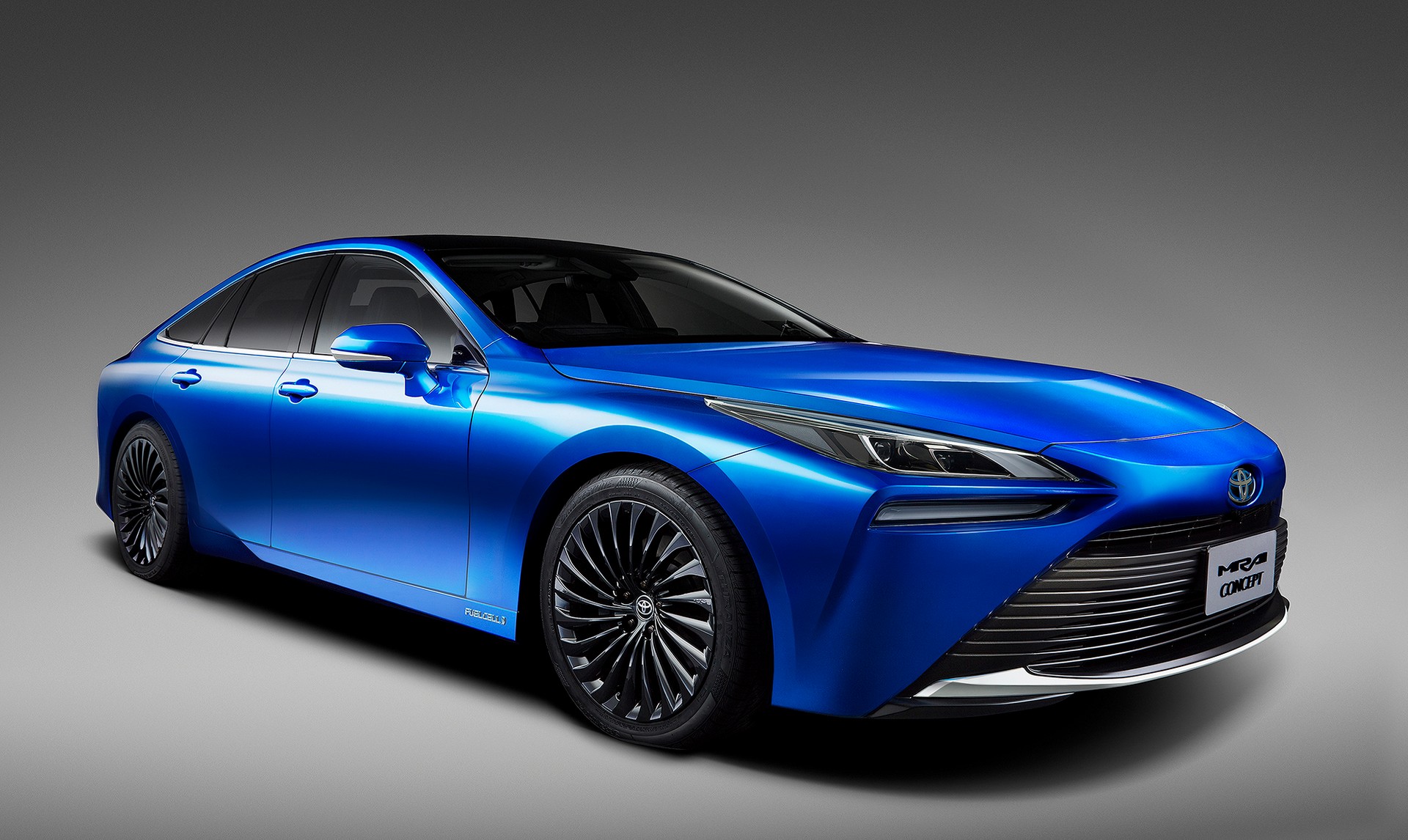People forget the Toyota Mirai exists, but it’s going to be harder to ignore in the future. Following its debut at the Tokyo Motor Show, Toyota brought the Mirai stateside and showcased it in Los Angeles.
Technically, it’s called a concept, but even Toyota admits it’s a pre-production version of the 2021 model. This thinly veiled concept is a radical departure from its predecessor as it eschews the angular Prius-like styling. It has been replaced by an upscale design that would fit right into a Lexus showroom. Toyota acknowledged this and said the Mirai has been “rebooted as a premium sedan with cutting-edge design, technology and driving performance.”
Also Read: 2021 Toyota Mirai Fuel-Cell Concept Previews Sexier, RWD Production Model
Starting up front, the Mirai has a shark nose front fascia with a massive grille that nearly spans the entire width of the vehicle. The model also has slender lighting units and a long sloping hood.
Moving further back, there’s flowing bodywork and prominent shoulder lines. We can also see a more dynamic roofline that gives the Mirai the appearance of a sporty five-door hatchback.
The concept measures 195.8 inches (4,973 mm) long, 74.2 inches (1,885 mm) wide and 57.8 inches (1,468 mm) tall with a wheelbase that spans 114.9 inches (2,918 mm). This means the concept is 3.3 inches (84 mm) longer, 2.7 inches (69 mm) wider, 2.7 inches (69 mm) lower and has a 5.5 inch (140 mm) longer wheelbase than the current model. Thanks to the increased dimensions, there’s a roomier cabin with a proper three-person rear seat.
Speaking of the interior, it’s more luxurious than before. Drivers sit behind a meaty steering wheel and find themselves looking at an 8-inch digital instrument cluster. To their right is a 12.3-inch infotainment system and a distinctive center stack that flows into the air vents.
We can also see gloss black trim, bronze accents, a wireless smartphone charger and premium leather seats with contrast stitching. Toyota also said the model will be offered with a 14-speaker JBL audio system and a digital rearview mirror.
The company was tight-lipped on performance specifications, but confirmed the Mirai will ride on a rear-wheel drive platform and offer a more engaging driving experience. That experience will also last longer as the car has been equipped with an improved fuel cell system and larger hydrogen storage tanks. This extends the range approximately 30%, so we can expect the car to travel around 405 miles (652 km) before needing to make a quick five minute fill up.
The second-gen Mirai will go on sale in late 2020 as a 2021 model. There’s no word on pricing or availability, but the car’s chief engineer, Yoshikazu Tanaka, has previously said “I want customers to say, ‘I chose the Mirai not because it’s an FCEV, but because I really wanted this car, and it just happened to be an FCEV.’”




